Translations 677
Cuba to immunize its entire population

Cuba will be among the first countries to immunize its entire population.
Speaking at the Round Table space, the president of BioCubaFarma said that the vaccine production and distribution capacities have already been analyzed and organized for their programming until next December, once the studies of the four vaccine candidates yield the expected satisfactory results.
Published: Thursday 04 February 2021 | 11:43:53 pm.
Author: Ana Maria Dominguez Cruz

Translated and edited by Walter Lippmann for CubaNews.
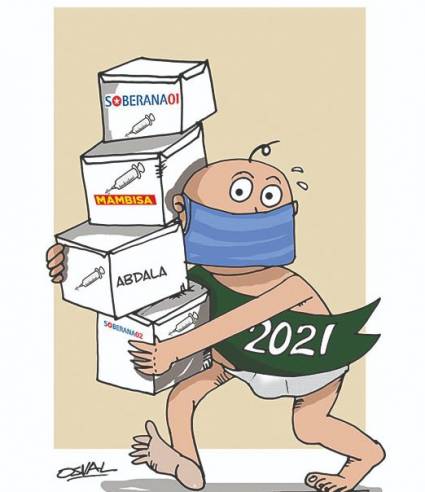
Cuba develops four vaccine candidates against COVID-19.
The confidence that Cuba will be one of the first countries that will be able to immunize its entire population from its existing capacities of production and distribution of vaccines against COVID-19 came this Thursday at the Round Table, dedicated to the subject.
Eduardo Martínez Díaz, president of BioCubaFarma, explained this while speaking on the radio-TV program, together with Marta Ayala Ávila, general director of the Center for Genetic Engineering and Biotechnology; Vicente Vérez Bencomo, general director of the Finlay Institute of Vaccines, and Eduardo Ojito Magaz, general director of the Center for Molecular Immunology.
Likewise, Mr. Martínez Díaz pointed out that they have already been analyzed and organized for their programming until next December, once the studies of the four vaccine candidates yield the expected satisfactory results.
He said that our scientists are working on four vaccine candidates at the same time because they all use the same type of antigen, so that the desired immune response can be achieved in all cases.
In addition, he explained that all the genetic information has been inserted in bacteria, yeast and cells of higher organisms, such as mammals, and that in the latest variants encouraging results were achieved which allowed advancing in that direction. Each one will differentiate the formulation of the vaccines, based on platforms used in previous vaccines with marked effectiveness and safety.
The President of BioCubaFarma said that “the vaccines are working well”, but we still cannot say that they are effective, “that is why we have to continue with the studies. We cannot bet on a variant and then the studies not give the expected results. In that case, we would have to start all over again”.
He emphasized that the production of several vaccines could be deployed at the same time, in case the expected results were obtained in all of them, and then the doses would be studied, according to each population group, as well as the possibility of assigning some of them to the treatment of COVID-19 convalescents.
He pointed out that, as an advantage, Cuban vaccines do not require large refrigeration chains, but temperatures of two to eight degrees Celsius. In addition, they allow for the application of successive booster doses, which is essential in view of the appearance of new variants of the virus.
Martinez Diaz insisted that it is not possible to acquire vaccines produced by other countries because there is not enough quantity to do so. “To date, only 108 million doses have been applied, which means that only a little more than one percent of the population has been vaccinated. Only 13 countries have applied more than one million doses of vaccine, including the United States and China.”
He stressed the need for an increase in the global vaccination rate and for prices to fall, so that the entire population has the possibility of protecting itself, including those living in poor countries.
COMMENTS ON WEB PAGE (Unedited):
Jorge Puerto
Friday 05 February 2021 | 07:42:28 am.
Encouraging news.
Reply
Valo
Friday 05 February 2021 | 08:22:45 am.
Bravo for Cuba. congratulations to all Cuban scientists.
Reply
Neosan72
Friday 05 February 2021 | 09:58:48 am.
The incorrect headline should read CUBA will vaccinate 100 percent of the population at the conclusion of clinical trials because you dare to anticipate events without having an idea of the effectiveness of the current vaccine projects It is very easy to write without delving into the matter and violate international procedures this can steal much credibility to the work of all scientists of our nation and I’m sure you do not have the information on the percentage of effectiveness and immunological load generated by such vaccine candidates.
Reply
Leo
Friday 05 February 2021 | 12:59:33 pm.
Hi all. I believe and trust in Cuban science and also in the managers and scientists who are in charge. If they say so it is because they know. My congratulations and hopefully they will be ready and only when they should be, not in a hurry. Greetings, Leo
Reply
neisicruz
Friday 05 February 2021 | 02:43:30 pm.
I trust in Cuban medicine, in our scientists, in the Revolution. Thank you for the effort you make every day.
Reply
Zuleika machado gomez
Friday 05 February 2021 | 06:30:39 pm.
I would like to congratulate the collective of scientists as always putting their intellect and dedication in favor of the health of our people. Let’s hope that our people continue to comply with the measures because unfortunately there are many irresponsible people who discard the established measures putting at risk their health and that of others. Without thinking that there are so many people involved in this fight who spend many days away from their families the medical and paramedical personnel who are on the front line to the cooks nurses drivers etc who are also working and can be infected who have families . To them our most sincere respect. And to the scientists of this important project a thousand blessings. And our immense gratitude . ????????????????????????????????????????????????????????????????????????????????♥️♥️♥️♥️
Reply
Nery Pila
Friday 05 February 2021 | 11:11:21 pm.
The universal desire to be able to have the certainty of being vaccinated efficiently and effectively against Covid is immediate, but the certainty of Cuban scientists that we will have our population and who knows how many more internationally as usual is firm and certain. Congratulations to our scientists. I trust
Reply
Ariel
Saturday 06 February 2021 | 11:21:25 am.
Israel has already vaccinated 80 ? of its population and for free, Cuba may vaccinate its entire population but still can not be given time, we must first confirm the results of their vaccines. Let’s not be sensationalist, let’s stick to reality, so that we don’t see previous campaigns on various issues that later are not fulfilled.
Reply
Raider
Saturday 06 February 2021 | 12:46:17 pm.
Since we will be among the first who will be the other nations at the top of that list and with which vaccines have they procured vaccination?
Marie Curie: ten times the first

Marie Curie: ten times first
November 12, 2012
Translated and edited by Walter Lippmann for CubaNews.
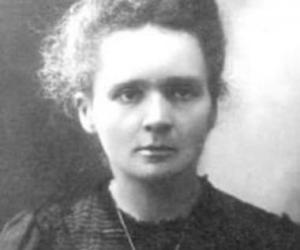
Marie Curie
Intelligence, rigor, will, imagination, passion… these were some of the qualities of Marie Curie, the first woman to win the Nobel Prize. But there were more things in which she was a pioneer. We list them below:
1. Top of her class when she finished high school at the age of 15 (1883). She was awarded a gold medal.
2. The first woman to graduate in Physics at the Sorbonne University. That year (1893) only two women graduated in the entire University of Paris. Marie was also the first in her class.
3. The first person to use the term radioactivity (1898).
4. The first woman in Europe to receive a doctorate in science (1903).
5. The first woman to receive a Nobel Prize in Physics (1903). The prize was awarded to her, together with her husband Pierre and Henri Becquerel, for the discovery of radioactivity.
6. The first woman to be a professor and head of laboratory at the Sorbonne University (1906).
7. The first person to have two Nobel Prizes. The second was in Chemistry, in 1911, for having prepared radium and researched its compounds.
8. The first woman to be a member of the French Academy of Medicine (1922).
9. The first Nobel mother with a Nobel daughter. In 1935 her daughter Irene was awarded the prize in Chemistry.
10. The first woman to be buried under the dome of the Pantheon on her own merits (1995).
Granma Explains Feminism


SUBHEAD
Feminism
My mother asks me, after reading something someone posted, what feminism is. I explain. She, who is 80 years old, looks at me, and before getting up from the armchair, she tells me in a casual tone: “Son, here, since 1959, we call it Revolution”.
Translated and edited by Walter Lippmann for CubaNews.
Author: Ernesto Estévez Rams | internet@granma.cu
February 3, 2021 00:02:34 AM
She confessed to me several times that she danced rock ‘n’ roll. The white variant, which was the one that became popular in Cuba, that of Elvis Presley. When she told me that she danced rock ‘n’ roll, she meant that she used to get her hair disheveled dancing to that devil’s music. She spun around, jumped, was lifted up and thrown to land again to the rhythm of the music. A neighborhood policeman, intolerant and arrogant, came with a lemon in his hand, and made the men drop the lemon inside their pants to see if it would roll down one of their legs. If you didn’t fall, you were in trouble. For the ladies, a tape measure with a visible red mark. Measuring the length of the skirt above the knee, if it was below the scarlet line, you were in trouble. Those were times when you couldn’t talk much with the police.
At that time, she sewed with her mother and sisters to earn a living and took a course in interior design as a way to improve her skills. She was the face in the ECLO of an American food brand. Standing up, smiling, she showed the products and offered samples for consumers to taste the wonders of what was advertised. Her luck wasn’t the worst either. If she had been black, she was useless as an image. For those of black complexion, their lucky destiny was to be a maid, or a servant, whatever you prefer to call them.
Then the Revolution triumphed. She enlisted as a volunteer teacher and was a compañero of Conrado Benítez. Despite her youth and inexperience, she was put in charge of several boarding schools. They were entire neighborhoods converted into schools, once run by the bourgeoisie or their cronies. Now, a school for poor women, peasant women, urban women, humble women.
Her sister also enlisted as a literacy volunteer and became a literacy teacher. The other sister, the eldest, the same luck, and what luck! They became teachers, they taught. They learned. She, the director of the school, knew all of La Lisa, La Coronela, Playa. The houses of the officers of the defeated army became schools, she became the teacher of other women. In the photos, the microphone higher than her physical stature. Speaking, guiding, directing, raising her arm in harangue, waving her hand.
She was a delegate, president of the CDR, militia member, company leader, Party militant. She was white, she married a black man from Guantanamo. A black man who fought in the underground, a black man who became a university student. A black man who is still by her side today. He was a teacher, a cane cutter, a company leader, founder of the Party. And along the way, at some point, they had time to have children. They, the two of them, neighbors to anyone, not unlike so many others in the same place, in the same circumstances.
My mother asks me, after reading something someone posted, what is this feminism. I explain. She, 80 years old, looks at me, and before getting up from the armchair, she tells me in a casual tone: Son, here, since 1959, we call it Revolution.
Marie Curie was born on a day like today

Marie Curie was born on a day like today
By Carlos del Porto
November 7, 2017
Translated and edited by Walter Lippmann for CubaNews.
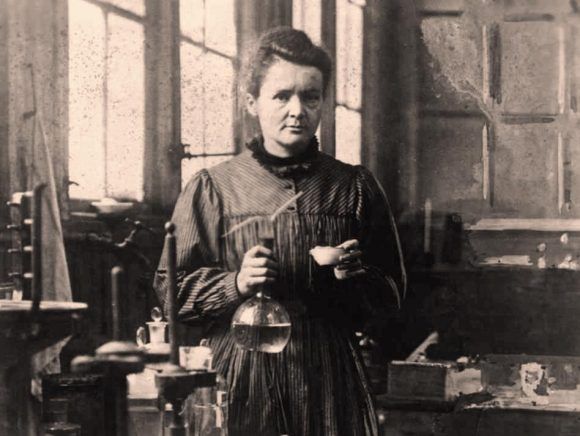
On November 7, 1867, Polish scientist Maria Salomea Slodowska Curie is born in Warsaw, Poland.
Maria Curie was a Polish physicist, mathematician and chemist, and a naturalized French citizen. She was the fifth daughter of Władysław Skłodowski, a high school teacher in physics and mathematics like her grandfather, and Bronisława Boguska, who was a teacher, pianist and singer.
In 1891, at the age of 24, Maria enrolled in the Mathematical and Natural Sciences Department at the Sorbonne University in Paris, France. From that moment on, Maria was renamed Marie Skłodowska. Despite having a solid cultural background acquired in a self-taught way, Marie had to work hard to improve her knowledge of French, mathematics and physics, in order to keep up with her peers.
In 1893, she obtained a degree in Physics and came first in her class; in 1894, she also graduated in Mathematics, coming second in her class. In that year she also met her future husband, Pierre Curie, who was a professor of physics. The two began working together in the laboratories and married on July 26, 1895.
After a double degree, the next challenge was to obtain a doctorate. Up to that time, the only woman who had been awarded a doctorate was the German Elsa Neumann. The first step was to choose the topic of her thesis. After discussing it with her husband, they both decided to focus on the work of physicist Henri Becquerel, who had discovered that uranium salts transmitted rays of an unknown nature. This work was related to the recent discovery of X-rays by the physicist Wilhelm Röntgen. Marie Curie became interested in this work and, with the help of her husband, decided to investigate the nature of the radiation produced by uranium salts.
Marie Curie and Pierre Curie studied radioactive leaves, in particular uranium in the form of pitchblende, which had the curious property of being more radioactive than the uranium extracted from it. The logical explanation was to suppose that the pitchblende contained pieces of some element much more radioactive than uranium. They also discovered that thorium could produce radioactivity. After several years of constant work, by concentrating various kinds of pitchblende, they isolated two new chemical elements.
The first, in 1898, was named Polonium in reference to their native country. The other element was named Radium, due to its intense radioactivity. Pierre had periods of great fatigue that even forced him to rest in bed, and both suffered burns and sores from their dangerous radioactive work. Shortly thereafter Marie obtained one gram of radium chloride, which she achieved after handling almost eight tons of pitchblende. In 1902 they presented the result, which brought them fame. Both Pierre and Marie accept and lend all their research without making any profit from it by means of patents, a fact that is applauded by the whole world.
Directed by Becquerel himself, on June 25, 1903, Marie defended her doctoral thesis, entitled Investigations on Radioactive Substances, before a tribunal presided over by the physicist Gabriel Lippmann. She obtained her doctorate and was awarded cum laude. Together with Henri Becquerel and Pierre Curie, Marie was awarded the Nobel Prize in Physics in 1903, “in recognition of the extraordinary services rendered in their joint research on the radiation phenomena discovered by Henri Becquerel”. She was the first woman to receive such an award.
On April 19, 1906, a tragedy occurred: Pierre was run over by a six-ton carriage and died without anything being done for him. Marie was greatly affected, but continued with her work and refused a life pension. She also took over her husband’s professorship and was the first woman to teach at the university in the 650 years since its founding. On November 15, 1906, Marie Curie gave her first lecture. Expectations were high, as it was the first time a woman had taught a class at the university. A large number of people attended; many of them were not even students. In that first session, Marie spoke about radioactivity.
In 1910 she demonstrated that a gram of pure radium could be obtained. The following year she received the Nobel Prize in Chemistry “in recognition of her services to the advancement of Chemistry by the discovery of the elements Radium and Polonium, the isolation of Radium and the study of the nature and compounds of this element”.
With a disinterested attitude, she did not patent the process of Radium isolation, leaving it open to the research of the entire scientific community. Marie Curie was the first person to be awarded two Nobel Prizes in two different fields. The other person to have won it so far is Linus Pauling (Chemistry and Peace). Two Nobel Prizes in the same field have been won by John Bardeen (Physics) and Frederick Sanger (Chemistry).
A few months after her last visit to Poland, in the spring of 1934, Curie, after going blind, died on July 4, 1934 at the Sancellemoz Clinic, near Passy (Haute-Savoie, France), from aplastic anemia, probably due to the radiation to which she was exposed in her work, and whose harmful effects were still unknown. She was buried next to her husband in the cemetery of Sceaux, a few kilometers south of Paris.
Sixty years later, in 1995, her remains were transferred, together with those of Pierre, to the Pantheon in Paris. In the speech delivered at the solemn entry ceremony, on April 20, 1995, the then President of the French Republic, François Mitterrand, addressing especially her grandchildren and great-grandchildren, emphasized that Marie had been the first woman to be buried in the Pantheon, noted that Marie, who had been the first French woman to be a Doctor of Science, to be a professor at the Sorbonne and also to receive a Nobel Prize, was again the first French woman to be laid to rest in the famous Pantheon in Paris on her own merits (in which she remains the only one to this day).
Her eldest daughter, Irène Joliot-Curie (1897 – 1956), also won the Nobel Prize in Chemistry, in 1935, one year after her mother’s death, for her discovery of artificial radioactivity.
She founded the Curie Institute in Paris and in Warsaw, and in addition to the two Nobel Prizes, won the Davy Medal in 1903, the Matteucci Medal in 1904 and the Willard Gibbs Prize in 1921.
Poliomielitis, Covid-19 y el Socialismo
Poliomielitis, Covid-19 y el Socialismo
Por Louis Proyect
14 de marzo de 2020
Traducido por Walter Lippmann por CubaNews.
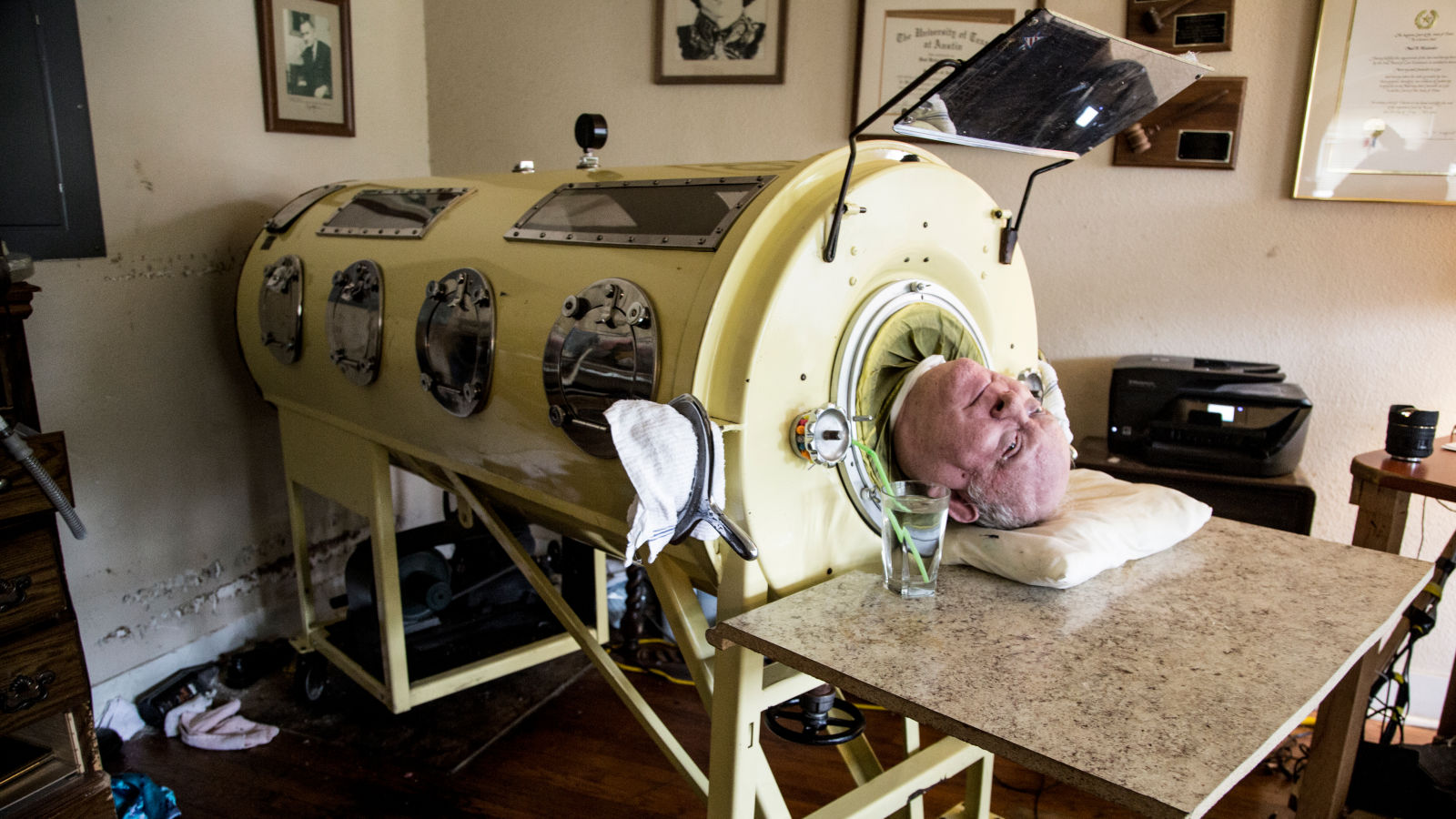
Paul Alexander, uno de los pocos supervivientes que quedan, pasa casi todo el día dentro de su pulmón de acero.
En 1952, cuando yo era muy joven, el miedo se apoderó de mi pequeño pueblo en Catskills y también de todo Estados Unidos. Ese año, sesenta mil niños se vieron afectados por el virus de la poliomielitis, que dejó 3.000 muertos y a miles más paralizados. Algunos niños fueron mantenidos con vida en un pulmón de hierro que funcionaba como el ventilador de hoy en día, pero que los mantenía confinados en un virtual ataúd viviente.
A ese verano lo llamaron la “estación de la polio”. En Woodridge, teníamos el lago Kaplan, un estanque mas bien, en el que nadaban los niños de por allí. Yo iba allí principalmente a caminar cerca de la playa. Un verano, nuestros padres nos dijeron que lo iban a cerrar por la epidemia de la polio. También nos advirtieron que no nos sentáramos demasiado cerca en los cines, un verdadero problema cuando la última película de Martin y Lewis tenía a los niños haciendo cola alrededor de la manzana para comprar una entrada en el Lyceum Theater de Woodridge.
FDR fue probablemente la víctima de la poliomielitis más conocida en Estados Unidos, pero muchos otros padecieron la enfermedad, como Neil Young y Francis Ford Coppola, que tuvieron casos más leves. Patrick Cockburn, nacido en 1950, enfermó de polio a los seis años. En 2005 escribió un libro sobre su experiencia, titulado “The Broken Boy” (El chico roto). En una entrevista con NPR ese año, el presentador le dijo: “Te quedó una cojera, una cojera severa. Pero usted entrevistó a otros supervivientes que estaban realmente mucho peor”. Cockburn respondió:
Sí, muchos de ellos. Un hombre que se convirtió en empresario tuvo que aprender a firmar su nombre con los dientes, con un bolígrafo clavado en los dientes y un aparato especial. A muchos otros les afectó la espalda, los pulmones y las piernas. Pero mucha gente se defendió. Conocí a un agricultor que tenía miedo de que cuando volviera a casa, por estar tan lisiado, la gente no lo aceptara. Pero, en realidad, su familia -y las familias irlandesas son muy fuertes- readaptó la granja para que pudiera manejar la maquinaria agrícola, para que pudiera ser un agricultor trabajador. Y muchas otras personas lucharon contra dificultades extraordinarias.
Para muchos médicos, el objetivo de desarrollar una vacuna para prevenir la polio se convirtió en algo primordial. FDR fundó la Fundación Nacional para la Parálisis Infantil en 1938 y promovió la Marcha de las Monedas de 10 centavos para la investigación de la polio. Cuando Harry Truman llegó a la presidencia, se comprometió a luchar contra la poliomielitis utilizando un lenguaje que recordaba al New Deal de los años 30:
La lucha contra la parálisis infantil no puede ser una guerra local. Debe ser a nivel nacional. Debe ser una guerra total en cada ciudad, pueblo y aldea del país. Porque sólo con un frente unido podemos esperar ganar cualquier guerra.
Dos médicos investigadores, judíos de Nueva York, fueron fundamentales en el desarrollo de una vacuna. Ninguno de ellos vio esto como una forma de hacerse rico. Su objetivo era únicamente salvar la vida de los niños.
Nacido en Nueva York en 1914, Jonas Salk desarrolló en 1955 una vacuna basada en virus muertos de la polio. El respaldo a su proyecto fue universal, con 100 millones de contribuyentes a la Marcha de las Monedas de 10 centavos, y 7 millones de voluntarios caminando por las calles con el emblemático banco colector.
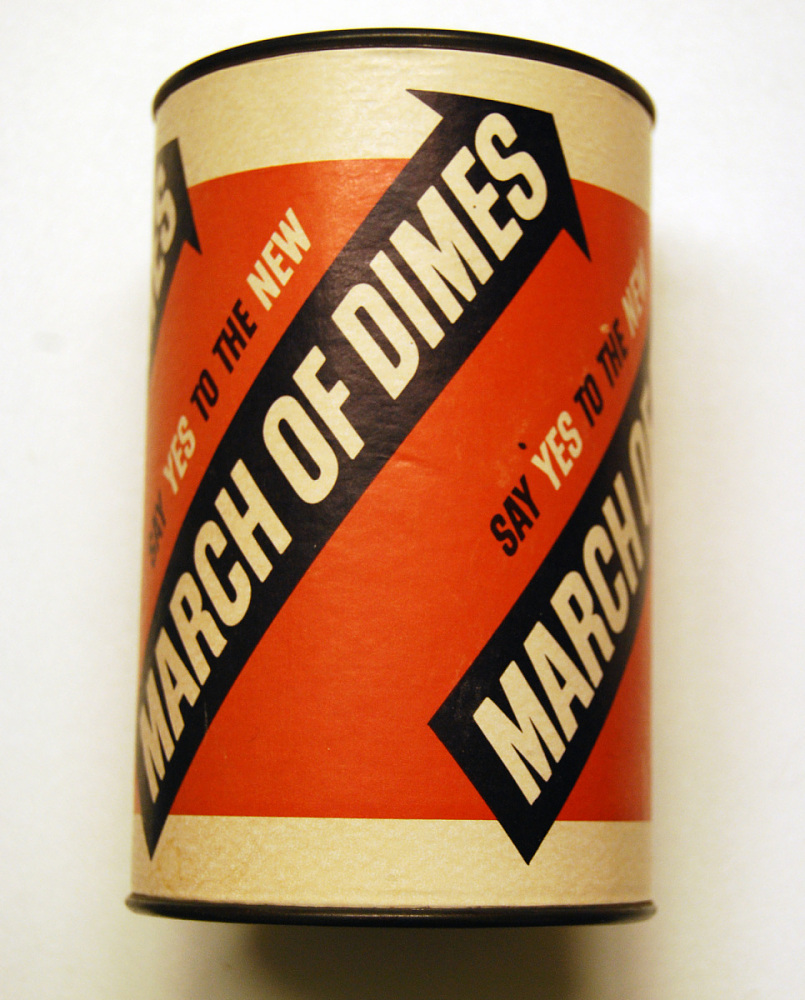
Collection bank. 2005.3016.11.
Salk podría haber ganado millones patentando la vacuna, pero prefirió que estuviera lo más disponible posible. Cuando acudió al popular programa “Person to Person” de Edward R. Murrow, el presentador le preguntó a quién pertenecía la patente. Salk respondió: “Bueno, yo diría que a la gente. No hay ninguna patente. ¿Podría usted patentar el sol?” (Si se hubiera patentado, valdría 7.000 millones de dólares).
Da la casualidad de que Salk se graduó en el CCNY, un semillero de radicalismo en la década de 1930. No es de extrañar que J. Edgar Hoover tuviera su número. Cinco años antes de que presentara la vacuna, fue objeto de una investigación del FBI. Al escribirle a Dillon Anderson, uno de los más cercanos ayudantes de Eisenhower, Hoover recapituló sus transgresiones:
•Tres asociados no identificados de Salk, profesores de la Universidad de Michigan, dijeron que durante la Segunda Guerra Mundial Salk contribuyó a la ayuda de guerra para la Unión Soviética y fue “muy abierto” en sus elogios a ese país. Los asociados dijeron que Salk elogió los avances técnicos del país, mientras que su esposa, Donna, era aún más abierta en sus elogios a todos los aspectos de la vida soviética, escribió Hoover.
•Uno de los asociados profesionales de Salk en la U-M en la década de 1940 dijo que Salk estaba “muy a la izquierda del centro”. Otro asociado señaló que una organización liberal de la que Salk fue tesorero en 1946 se convirtió en “izquierdista” bajo el liderazgo de Salk.
•Salk y su esposa se inscribieron para votar al Partido Laborista Americano a principios de la década de 1940, dice la carta. Según un informante, el Partido Comunista se convirtió en una fuerza de control del ALP dentro de las áreas de la ciudad de Nueva York durante ese tiempo.
•Un informante informó que el hermano de Salk, Lee, era miembro del Partido Comunista en Ann Arbor en 1948.
•Según un informante, dijo Hoover, el nombre de Salk apareció en la lista de correo de la Conferencia de Nueva York por los Derechos Inalienables en 1941. El grupo fue citado como fachada comunista por el Comité de Actividades Antiamericanas de la Cámara de Representantes.
Nacido como Albert Saperstein en Bialystok, Polonia, en 1906, Albert Sabin se licenció en medicina en la Universidad de Nueva York, al igual que Salk. A diferencia de Salk, el objetivo de Sabin era desarrollar una vacuna basada en el virus debilitado de la polio. Ambas vacunas funcionaron, pero la de Sabin tenía la ventaja de poder tomarse por vía oral y ser más duradera.
Desafiando la histeria de la Guerra Fría, Sabin trabajó estrechamente con médicos y científicos del bloque soviético, lo que le valió la reputación de trabajar en una “vacuna comunista”. En un artículo titulado “La vacunación y el Estado comunista: la poliomielitis en Europa del Este”, Dora Vargha concluye que los Estados comunistas eran capaces de “hacer cosas buenas”, como ha dicho Bernie Sanders:
Tanto Oriente como Occidente compartían la percepción de lo que era el Estado comunista y su papel ideal en la prevención de la poliomielitis. Tras la aparición y la aplicación con éxito de las vacunas con poliovirus vivos, los estados de Europa del Este se consideraron especialmente aptos para lograr la eficacia en la contención -y erradicación- de la poliomielitis gracias a su participación en el desarrollo de la vacuna y su distribución. Occidente, aunque no respaldaba ideológicamente estos regímenes políticos, estaba de acuerdo. De hecho, Checoslovaquia, Hungría y Polonia se convirtieron en pioneros en la introducción, prueba y aplicación de vacunas de poliovirus vivo a escala masiva, mientras que sus pares de Europa del Este se apresuraron a seguirles en la vacunación masiva.
Desde una perspectiva geopolítica más amplia, la poliomielitis planteó cuestiones incómodas sobre el lado positivo de los regímenes comunistas (es decir, el control eficaz de las epidemias) y en poco tiempo llegó a simbolizar la ciencia “neutral” que rompía las barreras entre Oriente y Occidente. La organización vertical de los ensayos de vacunas y la inmunización, que en aquel momento se consideraba especialmente comunista y de Europa del Este, también pasó a considerarse la forma más eficaz de erradicar la poliomielitis a escala mundial.
Sabin continuó colabronado con las demonizadas sociedades post-capitalistas mucho tiempo después. En un artículo de 2014 titulado “Epidemias y oportunidades de colaboración entre Estados Unidos y Cuba”, Marguerite Jiménez describió su perspectiva internacionalista:
Varios años después de su apertura a la colaboración con la Unión Soviética, Sabin puso sus ojos en un colaborador comunista mucho más pequeño, uno que estaba mucho más cerca de casa. Sabin había viajado a Cuba varias veces antes de la revolución cubana de 1959, pero no había podido volver desde principios de los años cincuenta. A pesar de haber recibido múltiples invitaciones de funcionarios de salud pública de la isla a principios de la década de 1960, la escalada de las hostilidades entre Estados Unidos y Cuba hizo casi imposible una visita de tan alto perfil por parte de un famoso científico estadounidense.
La entusiasta búsqueda de Sabin de oportunidades de colaboración con la Unión Soviética durante la década de 1950 presagió sus esfuerzos en Cuba por superar los obstáculos políticos y el melodrama diplomático. En consecuencia, a finales de 1965, cuando el Departamento de Estado anunció una relajación de las restricciones a los viajes a las naciones comunistas por parte de ciertas categorías de profesionales, Sabin aprovechó rápidamente la oportunidad. El Departamento de Estado informó de que la relajación había respondido a la “insistencia de la comunidad médica” y se había hecho por razones de “humanidad” para promover una mayor cooperación internacional en la lucha contra las enfermedades. Aunque la investigación médica justificaba el carácter humanitario de la medida, el New York Times informó de que “la esperanza en los círculos oficiales era que los científicos médicos pudieran abrir la puerta a una cooperación más estrecha en otras áreas científicas.” Sabin envió inmediatamente copias del anuncio a sus colegas en Cuba y en veinticuatro horas recibió una invitación a través de la Misión Permanente de Cuba ante las Naciones Unidas.
Finalmente, tras casi dos años de planificación, Sabin llegó a La Habana el 4 de diciembre de 1967. Durante su estancia en Cuba, tuvo la oportunidad de visitar y reunirse con personas de una amplia gama de instituciones científicas y médicas, así como de hospitales, policlínicas e instalaciones de investigación. Aunque otros elementos de su viaje se hicieron públicos gracias a un puñado de artículos periodísticos sobre el tema publicados tanto en Estados Unidos como en Cuba, lo que no es comúnmente conocido es que durante su viaje, Sabin se reunió con Antonio Núñez Jiménez, un joven y prominente líder dentro del régimen de Fidel Castro y presidente de la Academia de Ciencias de Cuba. Sabin describió a Jiménez como una persona “de armas tomar” y “muy agradable”.
Ayer me acordé de Salk y Sabin tras leer un informe del Instituto de Investigación Sunnybrook, un hospital asociado a la Universidad de Toronto. Titulado “El equipo de investigación ha aislado el virus COVID-19”, revelaba que el Dr. Robert Kozak, la Dra. Samira Mubareka y el Dr. Arinjay Banerjee habían aislado el coronavirus del síndrome respiratorio agudo severo 2 (SARS-CoV-2), el agente responsable del actual brote de COVID-19.
Esa información sería fundamental para desarrollar una vacuna. Al describir su descubrimiento, Arinjay Banerjee se mostró muy en la tradición Salk/Sabin: “Ahora que hemos aislado el virus del SRAS-CoV-2, podemos compartirlo con otros investigadores y seguir trabajando en equipo. Cuantos más virus estén disponibles de este modo, más podremos aprender, colaborar y compartir.”
Colaborar y compartir. Eso no sólo es necesario para superar el COVID-19, sino para salvar al mundo de la destrucción capitalista.
Farhad Manjoo, uno de los únicos columnistas de opinión del New York Times que se pueden leer, estaba en lo cierto cuando escribió que “todo el mundo es socialista en una pandemia”. Escribió:
Puede haber un resquicio de esperanza: ¿Y si el virus obliga a los estadounidenses y a sus representantes a reconocer la fuerza de un ethos colectivista? El coronavirus, de hecho, ofrece algo así como un anticipo de muchas de las amenazas a las que podríamos enfrentarnos por los peores efectos del cambio climático. Como el virus no discrimina y es casi ineludible, nos deja a todos, ricos y pobres, en el mismo barco: La única manera de que cualquiera de nosotros esté realmente protegido es si el más pequeño de nosotros está protegido.
Amén.
…
The Virus of Inequality

The virus of inequality or inequality in the virus
Two reports warn of a truth, the deadly Covid-19 pandemic has increased inequities and global differences and although anyone can get sick, those with lower incomes add up much more in the statistics, are poorer and will have less access to the hopeful vaccine …
Author: Juana Carrasco Martin

Translated and edited by Walter Lippmann for CubaNews.
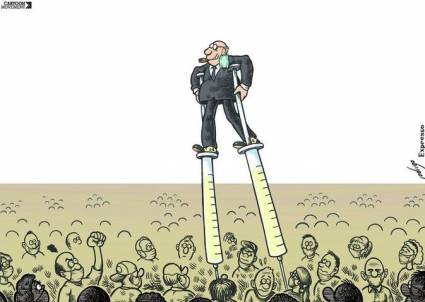
The combined wealth of ten of the world’s richest people could pay for vaccines to immunize everyone Author: Twitter Published: 02/02/2021 | 03:38 pm
Oxfam has been adamant that the combined wealth of the world’s ten richest people could pay for vaccines to immunize the entire world. At the same time, the International Labor Organization stated in a report that the Covid-19 pandemic has caused the loss of 255 million jobs.
Social inequity, unequal opportunities to access goods and services such as housing, education or health are among the consequences of the world’s health situation, where more than 103 million people have fallen ill and more than two million have died, and the count continues, while the vaccines already in use, which are not enough and are the object of disputes between first world countries that can afford them and are among their manufacturers, do not seem to be distributed fairly….
Those who have called it the virus of inequality are right. Here are some data that prove it.
The Oxfam report is titled “The Inequality Virus: Reuniting a coronavirus-torn world through a fair, just and sustainable economy,” and it announces all that it means and is needed.
Paul O’Brien, vice president of Oxfam America, in an interview with Democracy Now, noted of the pandemic situation: “The 10 richest people ended up making half a trillion dollars during the pandemic. The richest thousand got back all the money they lost in the pandemic, and they reached the same level of wealth in nine months. But at the same time, it has been disastrous for people at the extreme end of poverty.”
The report of this international confederation of 19 non-governmental organizations, which carry out humanitarian work in 90 countries under the slogan “working with others to combat poverty and suffering”, as they describe it on the Internet, warns that in the face of these exorbitant profits of billionaires, poor people will not recover from the economic and health crisis for at least a decade. If it does, it should be noted.
“In every country we looked at, inequality has worsened during the pandemic,” O’Brien added.
The Economic Commission for Latin America and the Caribbean (ECLAC) pointed out that this economic crisis and the slow exit from it will lead to the closure of 2.7 million companies in the region alone and some 8.5 million more workers will lose their jobs, in an emergency that by 2020 had already led to a significant drop in growth and economic contraction.
The economic recovery will be fragile and uneven, is the sharp forecast of ECLAC; the painful conclusion for millions of Latin Americans and Caribbeans who were already going through a limited growth, to which now add the consequences of the pandemic as the lower export of raw materials and the collapse of tourism, among other indices in decline.
ECLAC’s Executive Secretary, Alicia Bárcena, added other significant data in red: 54 percent of the region’s labor force does not have social protection or access to public health services.
Of this proportion, 57 percent are women, and this index added an aggravating factor that is reproduced in other regions of the world, even in developed countries. The International Labor Organization also brought its concerns to the 51st World Economic Forum in Davos, which met virtually this week and not in its usual snowy retreat in the Swiss Alps.
Globally, the pandemic cost workers $3.7 trillion in lost income and the destruction of the equivalent of 255 million jobs in 2020, four times the impact of the 2009 global financial crisis, the ILO reported.
But the summit meeting of politicians, businessmen and representatives of social and cultural organizations, which this time did not take place as usual in Thomas Mann’s Magic Mountain, did not exactly provide prodigious solutions at a peremptory moment for the planet. On the contrary, the widespread resurgence of the coronavirus, and even the new strains, highlighted the old weaknesses of health systems around the world, the injustices, the inaccessibility to medical care and vaccination that should be for everyone.
The slogan “The Great Reset” was crushed by an avalanche, and in this January 2021, as in the novel of the great writer, the problems discussed at the Davos Forum and the lack of intention to address them from what is fair, can be seen as the decadence of a way of life where the selfishness of those who only count profits in their finances over world health takes precedence.
The pandemic is conjunctural, although of extreme gravity. That is why its combination with structural problems, the same ones year after year, multiply the effects of inequity.
Check it out in these statements by Ursula von der Leyen, president of the European Commission, when the bloc intensified stricter monitoring of vaccine exports to countries outside the union. This is the case of the United Kingdom, because they had invested billions of euros and that “companies must now deliver” their vaccines to the 27 member states. “… We will set up a transparency mechanism for vaccine exports. Europe is determined to contribute. But it also means business.”
Ultimately that is the transparent truth,. The EU is a union of high-income rich countries, home to 342 billionaires; however, 123 million people at risk of poverty also reside there, Oxfam reported.
So what should we leave for the always neglected Africa? Cyril Ramaphosa, president of the African Union and of South Africa – one of the countries most affected by the coronavirus and even contributing a new strain, apparently of greater spread and lethality -, during his speaks at the 51st edition of the Davos Economic Forum, rightly criticized what he defined as “vaccine nationalism”, that is, the implementation of this selfish and inhuman attitude of hoarding, which hinders an equitable distribution of vaccines. “The rich countries of the world went out and acquired large doses (…) Some even acquired up to four times more than what their population needs excluding other countries”, a denunciation that he joined to the substantial comment: an increase in poverty is “expected for the first time in decades” and added, “the challenges we face were not created by the virus, they were created by us”.
You and I are not “us”, it is clear who fall into that category in the current pandemic and in the ancestral ills of that continent, the most powerful nations of the world that were colonial or neo-colonial empires.
The AFP news agency commented in this regard that bilateral agreements between governments and companies manufacturing vaccines against the Covid-19 virus could raise the prices of the drug and limit its supply to some regions.
Of course, the EU is not alone in this hoarding, where the United States and Donald Trump’s promise-threat that his country would be the first to be immunized and the willingness to buy all the vaccines produced in the world takes the lead.
Ramaphosa ratified the necessary denunciation: “We are concerned about vaccine nationalism (…) The rich countries of the world are holding on to these vaccines and we say: release the excess vaccines you have ordered and stockpiled”.
Reuters reported these days that the United Kingdom ordered 367 million doses of seven different vaccines for its population of approximately 67 million inhabitants, and the European Union secured almost 2.3 billion doses for a population of 450 million inhabitants.
However, the African continent, with some 1.3 billion inhabitants, barely completed 600 million doses of the international vaccine Covax, under the aegis of the WHO, which is also being requested by the rich countries.
We are faced with the confirmed presence of inequality in the midst of the terrible coronavirus.
Provocation in its Context

Provocation in its Context (+Video)
It is surprising how dates that have special significance in the collective imagination continue to be used to try to colonize our memory. There must be a limit to the lack of legality, responsibility and decorum with which some want to manage the affairs of the nation.
Author: Karima Oliva Bello | internet@granma.cu
February 1, 2021 01:02:44 AM
Translated and edited by Walter Lippmann for CubaNews.
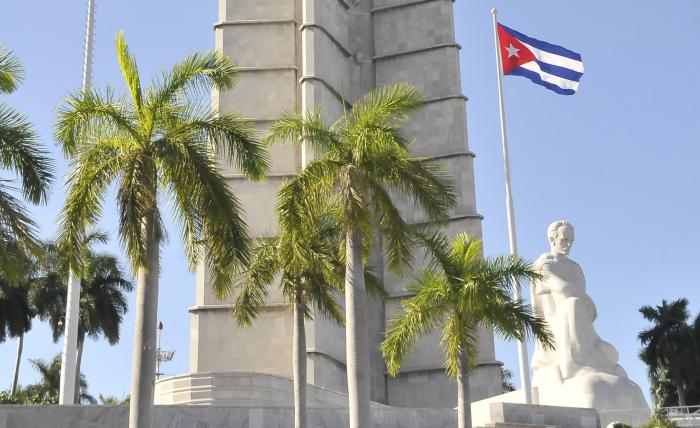
Photo: Ismael Batista Ramírez
The most recent events in front of the Ministry of Culture are not an expression of the violence of our State against young people with a critical stance, who want to dialogue, although this is how the anti-Revolutionary media present it. Instead, the events manifest the agenda of a group that, although it uses dialogue as a media façade, in reality assumes a frankly sabotaging attitude towards it. Dialogue, in this particular case, has not been the intention of the staging we have seen.
It is, rather, an unjustified siege of a Cuban institution (and its workers) that has created the conditions for dialogue to become viable. It is inscribed, with a markedly provocative character, within a dynamic of events that in recent times have been capitalized by known agents at the service of the outgoing U.S. government for the destabilization of the country, and the deployment of a coup d’état for political change in Cuba.
Two aspects are evidence of the opportunism with which the provocation was projected. In the first place, we are facing the most difficult moment since the pandemic began due to the number of daily infections, while the Cuban State is making commendable efforts to save lives, to create a vaccine that will allow us to be immunized as soon as possible and to carry forward, at the same time, a process of order that was necessary, but which creates a complex socio-economic context.
Secondly, these are acts of provocation that may further complicate the scenario of relations between Cuba and the United States, just at a time when a president has just taken office in the neighboring country who has declared his intention to review the current state of the aggressive policies of the previous administration, aimed at aggravating the economic blockade, genocidal violence perpetrated by the same people who pay some of the protagonists of the provocation we have just seen.
We invite you to weigh all these basic questions and to think about the violence that would be unleashed against our people if we were to allow the plans of those who wish to destabilize the country, assuming such irresponsible positions at a time like the present, to be carried out.
We are also facing facts that have an important symbolic connotation, we cannot ignore that they occurred on January 27, on the eve of another anniversary of the birth of our Apostle. It is surprising how dates that have special significance in the collective imagination continue to be used to try to colonize our memory. There must be a limit to the lack of legality, responsibility and decorum with which some want to manage the affairs of the nation.
On the life and legacy of MLK Jr.
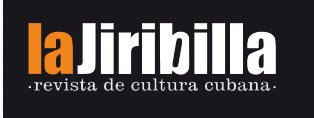
Martin Luther King Jr., comments on his life and legacy
Author: Víctor Fowler
lajiribilla@cubarte.cult.cuJanuary 01 to January 25, 2021
Translated and edited by Walter Lippmann for CubaNews.
On December 1, 1955, during a public bus ride in Montgomery City, Alabama, a 42-year-old black seamstress named Rosa Parks refused to give a white man the seat in which she was sitting. The codes of segregated behavior at the time included that Black people (in the southern states) paid their fare by boarding at the front door, where the driver was located, alighted to re-enter the bus now at the rear door, and only then sought accommodation in the back seats. Black people were not even allowed to walk through the aisle of the bus between white passengers to the back of the bus.
If they acted otherwise, for example, by remaining seated (which is what Parks did), the driver – who, in all likelihood, would offend the offender – was to call the police to take them to the station and, later, to try and punish the Black man or woman foolish enough to violate the rules. A little more than ten years earlier, Parks herself had had an altercation when, after paying, she refused to enter through the back door; on that occasion, rather than be arrested, Parks chose to leave the bus.
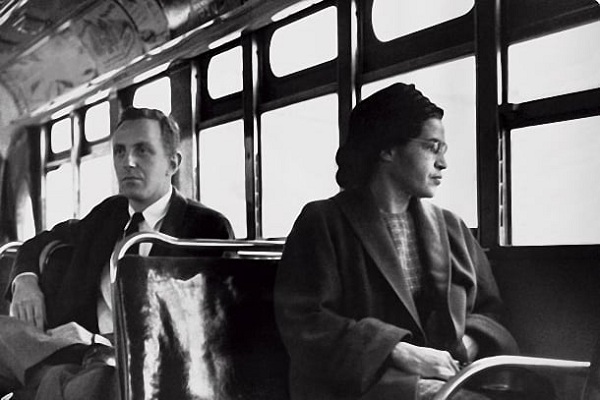
“Segregation in theaters, restaurants, hotels and buses was a constant irritation in daily life and an insulting nuisance.” Photos: Internet
The above episode is known as one of the main moments, the detonator, of a protest of leaders and, in general, Black demonstrators who – opposed to this segregationist practice – maintained a boycott against the company that extended, heroically, throughout a year and that would draw the attention of the mass media of the entire country to the violence and cruelty of racial discrimination in the South of the American nation. As stated from the very beginning of the volume Civil Rights in America. Racial desegregation of public accommodations. A National Historic Landmarks theme study:
Physical separation of the races in public accommodations was an uncomfortable and degrading practice for those who were denied equal access. Segregation in theaters, restaurants, hotels and buses was a constant irritation in daily life and an insulting nuisance. This resulted in direct confrontations between racial minorities who demanded their right to pay for goods and services in the marketplace, and white business owners who demanded the right to only serve whom they chose.[i] The segregation of theaters, restaurants, hotels, and buses was a constant irritant in daily life and an insulting nuisance.
The roots of the problem extend to the beginning of the 19th century when the northern states of what would become the United States of America virtually abolished slavery thanks to a variety of “constitutional, judicial or legislative” actions (p. 6). At the same time, in the South, the practices of separation between races intensified.
Along with this, the anxiety of contact meant that in the most racist nuclei of the northern elites, efforts to extend spaces differentiated according to skin color also multiplied. An example of this is the introduction of cars for Black people on trains and the numerous cases of protest and refusal to travel in them (even the great black abolitionist Frederick Douglass was removed from his seat on one occasion for refusing to change cars).
An 1857 court case, Scott v. Sandford (where a slave, Dred Scott, tried to prove that – because he had resided in non-slave states – he should be considered a free man), was to have enormous consequences for the struggles that were to take place a hundred years later and that we know today as the Civil Rights Movement. In the Dred Scott case, which Scott lost, the Supreme Court ruled not only that the plaintiff was not a citizen, but that “Congress had no authority to prohibit slavery in the territories”.
In other words, decisions about slavery (and others in this area involving customs) were left to the states and local governments. Another important decision was Hall v. DeCuir (1877) where it was decided that “the laws of a state are not applicable to interstate ship voyages and that only Congress can regulate interstate commerce”. Finally, Plessy v. Ferguson (1896) opened the door for the extension of “segregation of the races, provided the separate facilities were of equal quality.” [ii]
Although protests throughout the century led seven southern states to eliminate laws that favored segregation in the public space, legal decisions such as those mentioned above made possible a reality where supply found its most evident application in Black individuals of high economic capacity .For the same price as their white counterparts, Blacks could travel in a sophisticated train carriage, while in the lower economic strata the difference was perfectly visible in the quality of supply and in the treatment received.
II
Parks’ arrest was followed by a mobilization on her behalf whose movers and shakers included Edgar Daniel (E. D.) Nixon, leader of the Brotherhood of Sleeping Car Porters (with whom Parks had worked in the NAACP); Clifford Durr, a white Montgomery lawyer and strong advocate of interracial democracy with his wife Virginia; Jo Ann Gibson, an English professor at Alabama State College; and – among the clergy who offered support – a young pastor, just 26 years old, named Martin Luther King Jr. The success of the boycott, planned to last one day, was such that the organizers decided to extend it, and so it ended up spanning an entire year; along the way, on January 30, 1956, a bomb exploded in King’s house and on February 21 -along with almost 90 protest leaders- he was arrested and charged with having organized a boycott considered illegal. On November 13, the Supreme Court ruled that the Fourteenth Amendment prohibited racial segregation in interstate as well as intrastate travel, and so, on December 21, 1956, Reverend King “along with several black and white companions boarded a bus for a historic unsegregated ride” (p. 46).
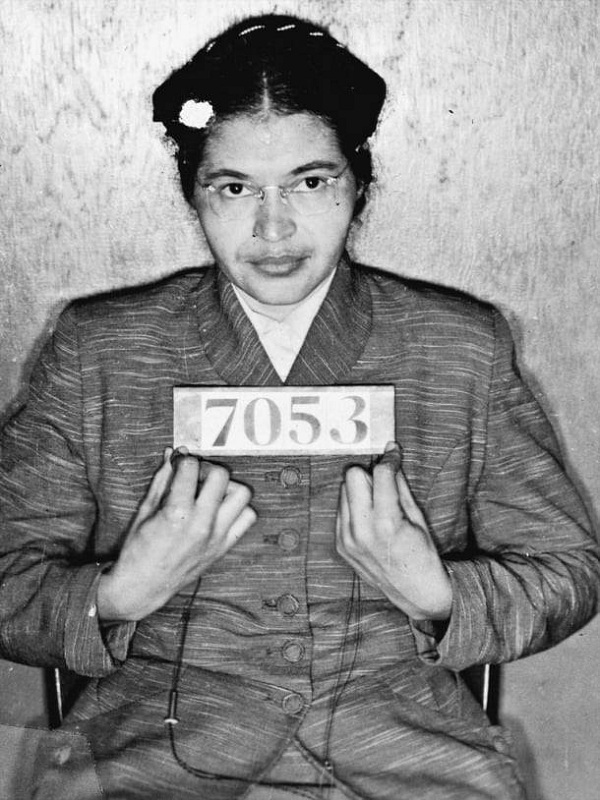
“Parks’ arrest was followed by a mobilization in her favor.”
From this point on, the life of Martin Luther King Jr. began to become more risky, complex and to grow into a legend. The son and grandson of Baptist pastors, a pastor himself, MLK developed his political, social, religious and cultural action in the brief period from 1955 to April 4, 1968, the date on which he died in Memphis, assassinated by James Earl Ray, a racist shooter. In this brief period, he became a leading figure in the Montgomery bus boycott (1955-1956); he helped found and was the first president (1957) of the Southern Christian Leadership Conference (SCLS); led the March on Washington for Jobs and Freedom in August 1963, where he delivered his famous I Have a Dream speech, recognized as one of the most important pieces of oratory delivered in the country; was awarded the Nobel Peace Prize in 1964 and was a leading figure in securing passage of the Civil Rights Act of 1964 and the Voting Rights Act of 1965. In addition, he was the central figure in two of the greatest battles for civil rights: those that took place in the cities of Birmingham and Selma, both in the state of Alabama, in 1963.
III
In the first of these, on April 13, 1963, King was arrested and during the three days he was behind bars he wrote his well-known Letter from Birmingham Jail in which he said, “Injustice anywhere is a threat to justice everywhere. We are caught in an inescapable tissue of mutuality, bound together in a simple fabric of destiny. Anything that affects one directly affects all indirectly.” In that same document, MLK would explain the essence of nonviolence (the Gandhian-inspired mode of protest that he breathed into the Civil Rights Movement) as follows:
Why direct action, sit-ins, marches and the like? Isn’t negotiation a better way? You are exactly right in your call for negotiation. Indeed, that is the purpose of direct action. Nonviolent direct action seeks to create such a crisis and establish such creative tension that a community that has consistently refused to negotiate is forced to confront the problem. (…) I have worked and preached vigorously against violent tension, but there is a kind of constructive nonviolent tension that is necessary for growth.[iii] I have worked and preached vigorously against violent tension, but there is a kind of constructive nonviolent tension that is necessary for growth.[iii]
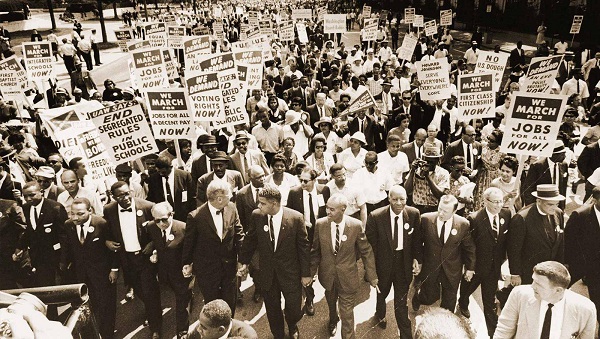
“There is a kind of constructive nonviolent tension that is necessary for growth.”
The condition of nonviolence could only find its foundation in the love that cares for the suffering other and that, as part of God’s created works, even embraces the other who oppresses. Because of this, King’s nonviolence opposes both the part of the Black community that accommodates segregation (be it the lower strata or the academic sectors) and those who preach hatred and separation between the races (which, in context, pointed to the Black nationalists of Elijah Muhammad).
IV
Martin Luther King’s social thought reached its greatest radicalism when, in an endeavor that would bring him multiple misunderstandings (even among leaders of the anti-racist struggles) as well as numerous new enemies (both among whites and Blacks), he became one of the most prominent intellectuals and political figures who publicly opposed the Vietnam War. The statement that gained the greatest resonance in this regard was the speech Beyond Vietnam: The Time to Break the Silence, delivered on April 4, 1967, at Riverside Church before an audience of about 300 people, exactly one year before his death, whose first sentence was: “Tonight I have come to this magnificent house of worship because my conscience leaves me no other choice”, and where he singled out the United States as “the greatest purveyor of violence in the world today”. The finesse of the socio-political analysis that MLK was able to develop shines through in excerpts such as the following:
Repeatedly we have been confronted with the cruel irony of watching black and white youths on television screens as they kill and die together for a nation that has been unable to seat them together in the same schools. We have seen them in brutal solidarity, burning shacks in a poor village, but we understand that they would never live together on the same block in Detroit. I cannot remain silent in the face of this cruel manipulation of the poor.[iv] Increasingly, by choice or by choice alone, the poor are being manipulated.
Increasingly, by choice or by accident, this is the role our nation has played – the role of those who make peaceful revolutions impossible by refusing to give up the privileges and pleasures that come from the immense benefits of investments across the sea.
I am convinced that, if we are to get on the right side of the world revolution, we need, as a nation, to undergo a radical revolution of values. We need to quickly begin the transformation from a “things-oriented” society to a “people-oriented” society. When property rights and the profit motive are more important than the person, it is impossible to conquer the gigantic trio of racism, materialism and militarism.[v] (Idem)
V
The other enormous cause to which MLK devoted a great deal of energy was the struggle of American workers for better wages, health care, education for their children, and decent housing. The satisfaction of such demands had to derive, in Luther King’s thinking, from the action of workers integrated into a powerful, organized, highly conscious and nonviolent labor movement; the speech delivered to the Illinois state labor union meeting on October 7, 1965, in Springfield is an illustration of that idea as the following quote shows:
The labor movement was the main force transforming misery and despair into hope and progress. As a result of hard-fought battles, economic and social reforms gave birth to unemployment insurance, age pensions, government assistance for the indigent, and, above all, new standards of living that meant mere survival, if not tolerable living. The captains of industry did not lead this transformation; they held out until they were overrun.[vi]
For Cornel West, editor of the volume The Radical King, MLK’s growing engagement with progressive guild leaders “is integral to his calling”; according to the well-known scholar, poverty was for King not only “a barbaric form of tyranny to be banished from the Earth,” but that “the greatness of nations or civilizations is measured not by military might, architectural prowess, or the number of multimillionaire citizens; the greatness of who or what we rather consist in how we treat the least of these: the weak, the vulnerable, the orphan, the widow, the widow, the stranger, the poor, the marginal, and the prisoner (West, 2014).
VI
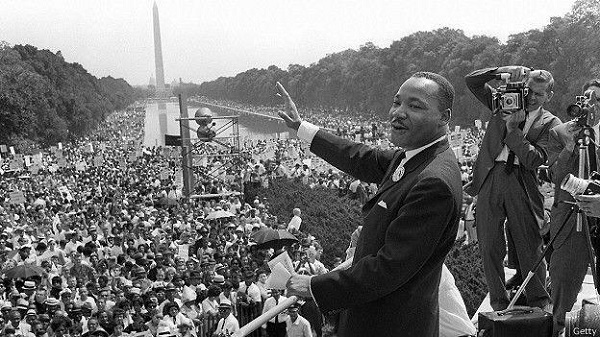
“The other enormous cause to which MLK devoted a great deal of energy was the struggle of American workers for better wages, health care, education for children, and decent housing.”
MLK’s last (and unfinished) great battle was the so-called “Poor People’s March” -which sought to repeat the massive demonstration of people in front of the Capitol in Washington, which in 1963 had attracted a quarter of a million people-, but now to demand a fairer redistribution of wealth in the country. In political terms, the most outstanding feature of this new mobilization was that it was intended to convene and represent a multiracial sector which, in addition to Black Americans, was intended to include Native Americans, Mexicans, Puerto Ricans and poor white Americans. Thus, in a speech delivered in New York on March 10, 1968, he was able to say:
Now, I said poor people, too, and by that I mean all poor people. When we go to Washington we are going to have black people with us because black people are poor, but we are also going to have Puerto Ricans because Puerto Ricans are poor in the United States of America. We are going to have Mexican-Americans because they are mistreated. We are going to have Native Americans because they are mistreated. And for those who don’t let their prejudices lead them to blindly support their oppressors, along with us in Washington we’re going to have Appalachian whites (West, 2014).
VII
MLK’s last public speech was the sermon he delivered in Memphis the night before his assassination. Known as I Have Been to the Mountaintop, this beautiful oratorical piece is inspired by the biblical story of Moses (who, after the Exodus, leads the people of Israel to the very Holy Land, although he dies without entering it) to establish a chilling parallel -in light of what was to happen the next day- between the biblical prophet and Martin Luther King himself. Following several investigations and testimonies about those last weeks, the amount of pitfalls, persecution, threats and misunderstanding around MLK damaged his spirit and health, to the point of causing depression and lack of sleep, among other ailments. Some testimonies even speak of the fact that, after years of threat, MLK began to feel, foresee or expect to meet an early death. The speech begins with a strange proposition that the speaker receives from the Almighty himself: to choose the era in which he prefers to live and this, after a long journey through time, turns out to be the one in which we find ourselves. At the end, after mentioning the possible threats to his life, MLK pronounced the following closing paragraph:
We’re going to have some tough days ahead, but I’m not interested in that right now. Because I’ve been to the top of the mountain. And I don’t worry about it. Like anyone else, I’d like to live a long life. Longevity has its place. But I’m not worried about it now. I just want to fulfill God’s wishes and He has allowed me to climb the mountain. And I’ve looked around. And I have seen the Promised Land. I may not go in there with you, but I want you to know tonight that we, as a people, will get to the Promised Land. And I am happy, tonight. I am not worried about anything. I fear no man. My eyes have seen the glory of the coming of the Lord (West, 2014).
VIII
During the funeral of Martin Luther King Jr., following the wishes of his widow, Coretta, excerpts from the sermon entitled The major drum, King delivered on February 4, 1968, at his Ebenezer Church in Atlanta, Georgia, were heard. May these words serve as a farewell:
If any of you are around when it’s my turn to find my day, I don’t want a long funeral. And if you have someone to say the eulogy, tell them not to talk too much. (…)
Tell him not to mention that I have a Nobel Peace Prize, for that is not important.
Tell him not to mention that I have been awarded three or four hundred other recognitions, because this is not important.
Tell them not to mention where I went to school.
But I would like someone to mention that day that Martin Luther King Jr. tried to give his life in service to others.
I would like someone to say that day that Martin Luther King Jr. tried to love someone.
I want you to say that I tried to take the right stand on the issue of war. I want you to be able to say that day that I tried to feed the hungry.
And I want you to be able to say that in my life I tried to clothe the naked.
I want you to be able to say that day that I tried to visit those who were in prison.
I want you to say that I tried to love and serve humanity.
Yes, say – if you wish – that I was a drum major; say that I was a drum major for justice.
Say I was a drum major for peace.
I was a drum major for honesty and all the other superficial things won’t matter.
I had no money to leave behind me.
I didn’t have the fine and luxurious things of life to leave behind me.
But I do want to leave a life of commitment and this is all I want to say.
If I can help someone as I pass.
If I can celebrate someone with a word or song.
If I can show someone that their journey is wrong,
then my life will not have been in vain.
If I can do my duty as a Christian,
If I can bring salvation to this world once built,
If I can spread the message as the master taught,
then my life will not have been in vain.
Yes, Jesus, I want to be at your right hand and at your left, But not for any selfish reason.
I want to be on your right and on your left, not in terms of some political kingdom or ambition, but I want to be right there in love and justice, in truth and commitment to others, so that it will make this old world a new world. (Idem)
CITATIONS:
[i] Cianci Salvatore, Susan. Civil Rights in America. Racial desegregation of public accommodations. A National Historic Landmarks theme study. Washington, D. C.: National Park Service, U.S. Department of the Interior, 2009.
[ii] Schultz, David (ed.) Encyclopedia of the Supreme Court. New York: Facts of File, 2005.
[iii] West, Cornel (ed.) The radical King. Boston: Beacon Press, 2014.
[iv] Idem.
[v] Idem.
[vi] King, Jr., Martin Luther. All labor has dignity. Boston: Beacon Press, 2011.
Cuban vaccine engineering

Vaccines and sovereignty (IV)
Cuban vaccine engineering
By Luis A. Montero Cabrera
January 28, 2021
This is the fourth in a series of articles
Translated and edited by Walter Lippmann for CubaNews.
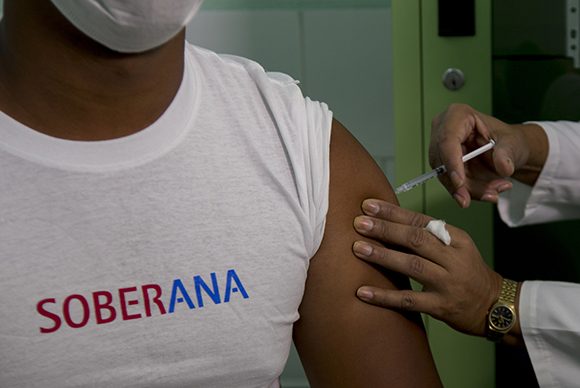
Cuba is rapidly developing four vaccine projects against coronavirus. Photo: Ahora.
It has been news in Cuba for months that we are generating our vaccines from platforms already created. The centers generating such projects work in partnership, exchanging experiences and knowledge, and also competing, as it should be done in a society that works for the good of all. Any group that participates will be happy for the triumph of the other, because what matters is the welfare of the whole society. Obviously they will also be very happy if their own vaccine candidate is successful.
It has been mentioned that our vaccines are all based on a key antigen of the COVID 19 virus: the constituent molecules of the outer spikes of the aggregate that makes up the virus. This molecular complex is referred to as RBD, from the acronym for receptor binding domain. We have also learned that adjuvants are substances that increase the effectiveness of vaccines. Their use is a common practice of this “engineering”, even to achieve vaccines against several diseases simultaneously.
The Finlay Vaccine Institute (IFV) is an institution that has grown from the success in the 80’s of the last century with the world’s first vaccine against meningococcus B. The current management has another very important success under its belt, in this case from the University of Havana (UH), with the world’s first commercial synthetic vaccine. This was put into practice at the beginning of this century against haempphilus influenzae. IFV is now working on at least two vaccine candidates known as SOBERANA 01 and SOBERANA 02. The RBD antigens of both are chemically treated variants of the coronavirus spikes.
The SOBERANA 01 antigen is based on the RBD produced from live mammalian cells into which DNA has been introduced with the codes to make them produce the desired molecules. This is why it is called “recombinant” RBD. The great advantage is that these molecules are identical to those of the virus but have been obtained without the intervention of this harmful entity and in a very efficient and harmless way in our industrial plants for this purpose in the neighboring Center for Molecular Immunology (CIM). The latter has a long experience in these matters and a proverbial willingness to empower itself through collaboration.
The RBD has been transformed with highly advanced laboratory chemical methods to duplicate it in a single structure. This is a so-called “dimeric” form that in preliminary tests proved to be more stimulating to the immune system. In short, it is more immunogenic than the simple “monomeric” form.
SOBERANA 01 also contains proteins that are harmless antigens of the outer membrane of the dreaded meningococcus bacteria in conjunction with aluminum hydroxide as adjuvants. The meningococcal antigen helps to “trigger” the generation of antibodies. Aluminum hydroxide is harmless, but it prolongs the presence of the antigen and gives our defenses more time to react. The interest in the effectiveness of a vaccine lies in the fact that it causes us to generate antibodies (immunogenicity) and that these are the ones that trigger the defense actions against COVID 19 (specific immunogenicity).
The SOBERANA 02 antigen is the same RBD of the COVID 19 virus but in monomeric form. The aim is to provoke the immune response of the organism by conjugating it (molecularly binding it) with another well-known and harmless antigen as adjuvant: the “tetanus toxoid”. This substance is associated with the bacteria that produce tetanus, but is chemically inactivated to render it harmless. It has long been used as their highly effective vaccine. A construction of the RBD with the toxoid creates a complex containing more specific antigens. It can be said that it would be “multimeric”. Thus an interesting engineering of the antigen with an adjuvant ensues.
The Center for Genetic Engineering and Biotechnology (CIGB), one of the most important institutions in Cuban science, has generated the other vaccines. Its track record is transcendental in these matters. It has two candidates also based on the RBD antigen whose coded name is CIGB 669 for nasal application and CIGB 66 for intramuscular application. Their applications have “combat” names such as MAMBISA and ABDALA. The mambisas were the women who joined the forces of the liberating army against the peninsular crown at the end of the 19th century. This denomination was reviled and even pejorative in the Spanish royalist press of the time. They made it equivalent to something like “terrorist” today. However, when the forces of freedom triumphed, it became a symbol of sublime militancy. ABDALA is the name of a play in poetry by José Martí, his first and adolescent literary work. The hero Abdala appears as a young man who is a convinced defender of his homeland, who puts it before all other personal and family interests. Our vaccines are samples of sovereignty, the fight for freedom and love for the homeland.
The nasal formulation of the preparation CIGB 669 takes advantage of the excellent permeability capacity of the intranasal membranes. Most of our skin is shielded against the penetration of molecules of any kind. But nasal membranes are not like that. They encompass a large surface area that is very dense in blood vessels and very permeable, which makes them a very attractive route for medicating. This pathway is also naturally selected to generate some very neutralizing antibodies and in the same location that is the route of virus entry.
Its RBD is accompanied as an adjuvant with another antigen that is used in the proven “HeberNasvac”, the chronic hepatitis B vaccine that is also administered nasally. This is its nucleocapsid, which is what the central molecular complex in a virus particle is called. Viruses are not cells, but they usually have this kind of “nucleus”. HeberNasvac” is the world’s first therapeutic vaccine against a chronic infectious disease. This platform is patented by CIGB for its vaccines. In the world there is only one other nasal vaccine on the market, the FluMist and Fluenz Tetra (according to their applications in the USA and Europe) and it is used against influenza. It has the advantages of being non-invasive and can be applied even in precarious hygienic conditions, as can be the case in many places in this disparate world.
Unlike the Finlay Vaccine Institute vaccines, the adjuvant nucleocapsid in CIGB 669 is recombinant and is produced in a typical culture medium. Its RBD, also recombinant, from CIGB is produced in yeast. MAMBISA is actually a procedure consisting of dose combinations of the two CIGB vaccine candidates. ABDALA is intramuscular only with the CIGB 66 candidate.
The success of a vaccine as a drug needs to be demonstrated before mass application. How is the most indicated and effective one known? How is work being done to test Cuban vaccines in times when a single day’s delay in application can cost a life?
 Luis Alberto Cabrera Montero holds a Doctorate Chemical Sciences. He is a Senior Researcher and Full Professor at the University of Havana. He is President of the Scientific Advisory Council of the University of Havana and is a Merit Member and Coordinator of Natural and Exact Sciences of the Academy of Sciences of Cuba. For a full biography, see http://www.academiaciencias.cu/en/node/674
Luis Alberto Cabrera Montero holds a Doctorate Chemical Sciences. He is a Senior Researcher and Full Professor at the University of Havana. He is President of the Scientific Advisory Council of the University of Havana and is a Merit Member and Coordinator of Natural and Exact Sciences of the Academy of Sciences of Cuba. For a full biography, see http://www.academiaciencias.cu/en/node/674
Vaccination against selfishness and inequality

Vaccination against selfishness and inequality
By: Randy Alonso Falcón
January 27, 2021
Translated and edited by Walter Lippmann for CubaNews.
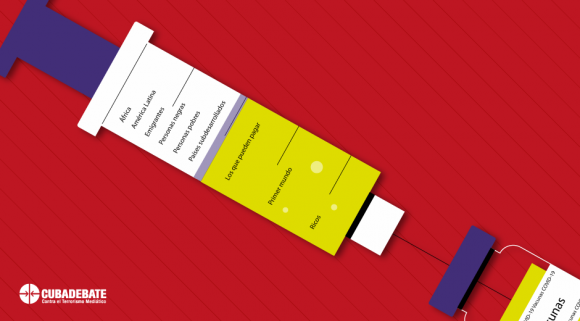 “It will not be an exhausted and outdated world order that can save humanity and create the indispensable natural conditions for a dignified and decent life on the planet. (…) This is not an ideological question; it is already a question of life or death for the human species.”
“It will not be an exhausted and outdated world order that can save humanity and create the indispensable natural conditions for a dignified and decent life on the planet. (…) This is not an ideological question; it is already a question of life or death for the human species.”
Fidel Castro Ruz
Speech at the Open Tribune of the Revolution, held in San José de las Lajas
January 27, 2001
Solidarity and Justice are still words in disuse even when the catastrophe concerns us all, like a great universal Titanic. A tiny and sticky virus has moved fears, shaken societies and health systems, provoked countless reflections on today and the future, but it has not succeeded in making equity and love for others prosper.
This week will mark the 100 millionth person infected with COVID-19 in the world and already more than 2 million people have died.
“Every day the gap between the haves and have-nots grows. The pandemic has reminded us that health and economics are linked and that we are all in the same boat. The pandemic will not end until it ends everywhere,” said World Health Organization Director-General Dr. Tedros Adhanom Ghebreyesus on Monday.
The numbers bear incontrovertible witness to the expert’s assessment.
The privileged cure
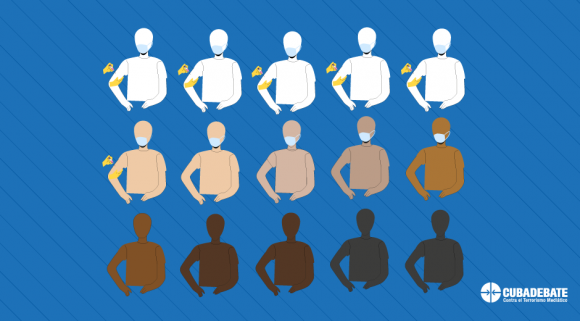
Despite numerous calls from the UN and various world leaders to seek a global response to the pandemic and to facilitate and share access to a cure for the disease, narrow views and deaf ears predominate.
“Science is succeeding, but solidarity is failing,” UN Secretary-General António Guterres noted on January 15. Several vaccines are already available worldwide to tackle the SARS-CoV-2 virus, but access to them is as deeply unequal as the world we inhabit.
Some 66.33 million doses have been administered to date, 93% of which were delivered in just 15 countries: the US, China, UK, Israel, United Arab Emirates, Germany, India, Italy, Turkey, Spain, France and Russia, according to the data analysis platform Our World in Data, based on figures from Oxford University.
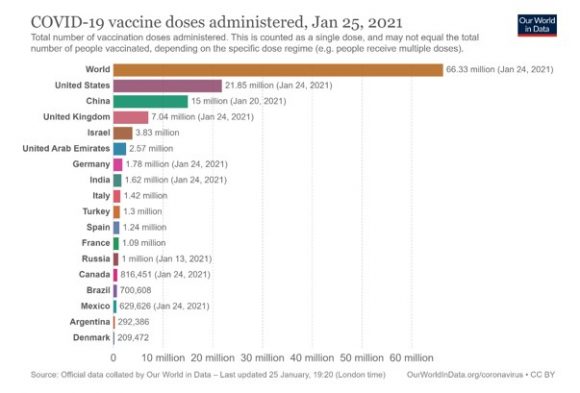
In all of sub-Saharan Africa, only 25 doses of vaccine could be administered in Guinea. Populous countries like Nigeria, with 200 million inhabitants, are waiting for the first dose.
The same scramble that took place at the beginning of the pandemic with lung ventilators, masks and protective suits is now being staged with vaccines: hoarding, overpricing and speculation. “An immoral race to the bottom,” as the WHO’s top executive described it.
The COVAX fund, created as a sort of global effort to make vaccines accessible to the poorest nations or those with limited resources, announced that in February it will begin to deliver the first doses (they first said that in January), but it recognizes that it has been limited by the lucrative agreements of various individual nations with the pharmaceutical companies that produce the anti-COVID vaccines.
Another handicap has been the high cost of the vaccines that have the most international approval so far. As Norwegian expert John-Arne Rottingen told The Guardian, “The difficulty is that we really only have widespread international approval for marketing two vaccines: the two mRNA vaccines. The challenge is that one, the Moderna vaccine is very expensive, and the other, the Pfizer / BioNTech vaccine, which was first available and is now being applied in Europe, is moderately expensive compared to others, and requires a super cold chain. The price and cold chain makes it not the ideal vaccines for a global vaccine.”
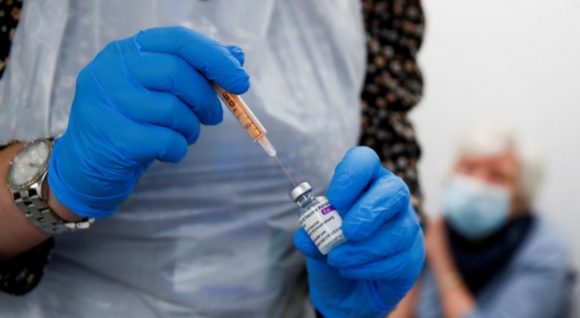
While nations like India and South Africa are calling on the WHO to campaign for pharmaceutical companies to relinquish intellectual property rights to COVID-19 vaccines and treatments. That would allow other qualified manufacturers in the South to expand production of those antidotes; countries like the US, UK and Canada have opposed the initiative. Those three wealthy nations have purchased or reserved enough doses to inoculate their populations at least four times.
High-income countries account for 16% of the world’s population, but hold more than 60% of the vaccines purchased so far.
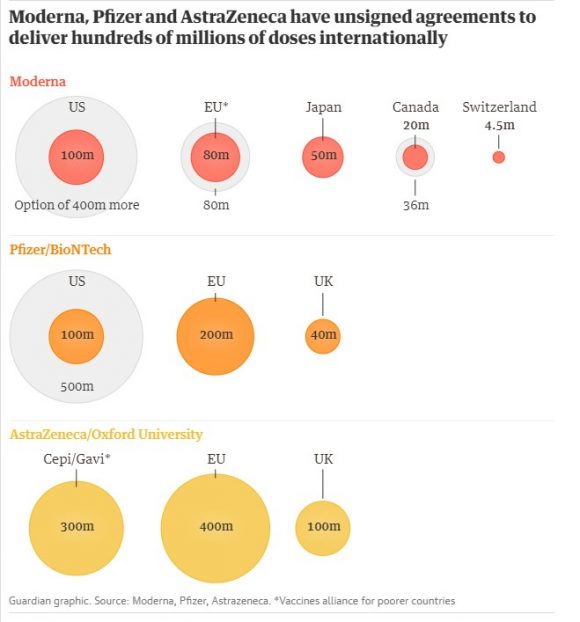
Rich countries account for the lion’s share of vaccine production. Graphic: The Guardian
Some forecasts put the total population of middle-income and poor countries that could be vaccinated this year at 27%. Duke University’s Center for Global Health Innovation estimates that there will not be enough vaccines to immunize the world’s population until at least 2023.
“The world is on the brink of a catastrophic moral failure, and the price of this failure will be paid in lives and livelihoods in the world’s poorest countries,” Dr. Tedros regretfully sentenced.
The virus of inequality
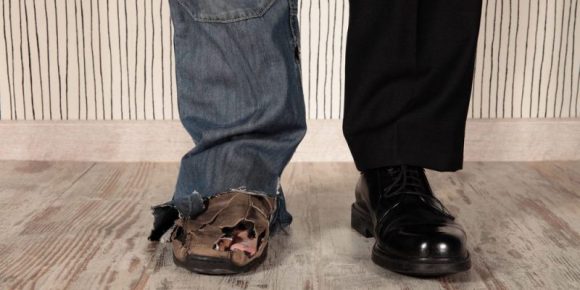
“Vaccine nationalism” is the exact reflection of an unequal and unjust world in which a few remain the great beneficiaries of wealth, for which billions must make do with the leftovers.
It is the “inequality virus” that OXFAM denounces in its most recent report, in which it evidences that the current failed economic system “allows a super-rich elite to continue to accumulate wealth in the midst of the greatest economic crisis since the Great Depression, while billions of people face great hardship to get by.”
While billionaires saw their fortunes increase between March and December 2020 by a total volume of $3.9 trillion-to amass an unimaginable $11.95 trillion-the poorest people on the planet will need “more than a decade to recover from the economic impacts of the crisis” accentuated by the COVID-19 pandemic.
Racial differences have also deepened. In the United States, the most powerful nation on the planet, if mortality rates were equal to those of the white population, nearly 22,000 Latinos and blacks would not have died from the coronavirus outbreak. In Brazil, people of African descent are 40% more likely to die from COVID than whites.
One of the conclusions of the Oxfam report is that “the pandemic is likely to increase inequality in a way never seen before”. The World Bank has warned that, in the current context, more than 100 million people could reach extreme poverty.
The 10 richest men in the world saw their net worth increase by $540 billion in the pandemic 2020 period. That list is topped by Jeff Bezos and Elon Musk. It also includes luxury group LVMH CEO Bernard Arnault, Bill Gates and Facebook CEO Mark Zuckerberg. According to Oxfam, the money hoarded by these potentates would be enough to prevent people from falling into poverty due to the effects of the virus and would also guarantee a vaccine for everyone on the planet.
Sunshine of the moral world
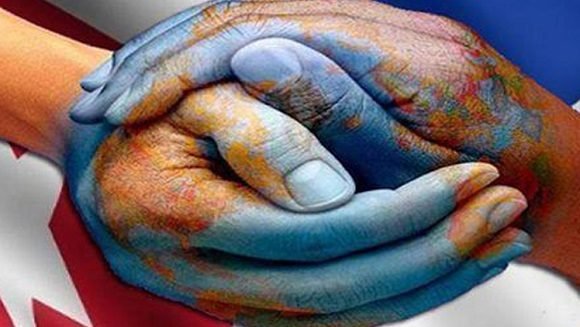
Among so much inequity and indifference, a small archipelago in the Caribbean, called Cuba, has been able to send thousands of doctors and nurses, in some 50 brigades of the “Henry Reeve” Internationalist Contingent, to more than thirty countries in Latin America and the Caribbean, Europe, Africa and the Middle East, to collaborate in the fight against the deadly disease.
Thousands of lives saved or recovered in a scenario of total complexity are the fruit of their solidarity work. The human and professional quality of these sons and daughters of the Cuban people overcomes the most diverse obstacles. It leaves a mark of affection, gratitude and example that is recognized by all those with whom they have shared and whom they have cared for.
That same country, with scarce economic resources but abundant in trained and educated talent, has been able to build an advanced biopharmaceutical industry, which is now preparing to produce 100 million doses of Soberana 02, one of the 4 vaccines on which its scientists are working. This would make it possible to immunize the entire Cuban population (it would be one of the first countries to achieve this) and to have more than 70 million doses available for other peoples of the South. There are already countries interested in acquiring it, such as Vietnam, Iran and Venezuela, Pakistan and India, the Director General of the Finlay Vaccine Institute recently announced.
Researchers from that institution are working with countries such as Italy and Canada to test the impact of the Soberana 01 vaccine on people who have already had COVID-19 and are convalescing, but are at risk of reinfection.
“We are not a multinational where (financial) return is the number one reason. We work the other way around, creating more health and return is a consequence, it is never going to be the priority,” Dr. Vicente Vérez, leader of the main vaccine research center in Cuba, explained to the press last week.
“Our world can only beat this virus one way: united,” the UN Secretary-General recently emphasized. Unfortunately, the vaccines of solidarity and justice have not been able to be applied in the rich world that dominates.
Subscribe to Blog via Email
| M | T | W | T | F | S | S |
|---|---|---|---|---|---|---|
| 1 | 2 | 3 | 4 | 5 | 6 | 7 |
| 8 | 9 | 10 | 11 | 12 | 13 | 14 |
| 15 | 16 | 17 | 18 | 19 | 20 | 21 |
| 22 | 23 | 24 | 25 | 26 | 27 | 28 |
| 29 | 30 | 31 | ||||

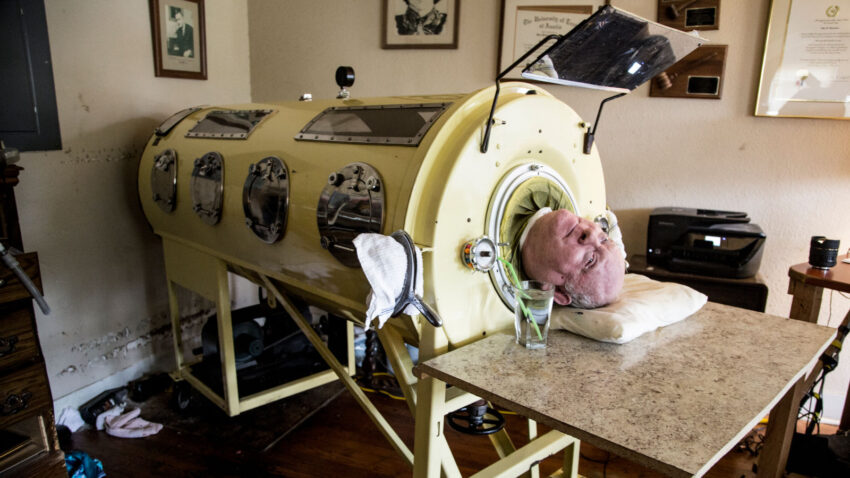
You must be logged in to post a comment.